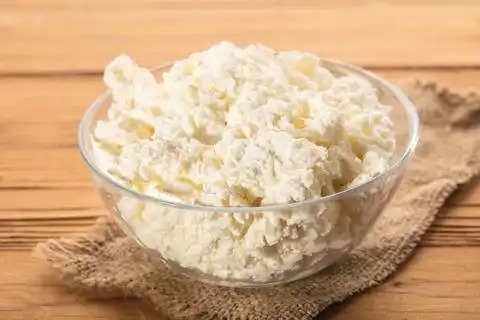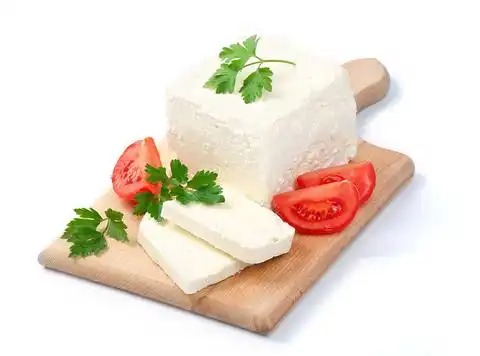Common Cheese in the United States and How to Eat It « Travel Guide to the United States
Introduction: The first time I visited the cheese section of a supermarket, I was completely lost. Later, I learned that there are so many different types and varieties of cheese, each with a different taste and texture.
Many years ago, when I first arrived in the United States, I stumbled upon the cheese section of a supermarket. Out of curiosity, I scrambled closer to take a look. The overwhelming stench left me speechless. Later, a knowledgeable friend explained the many different types and varieties of cheese, each with a distinct taste and texture.
What is cheese?
Cheese, also known as cheese, ricotta, or yogurt, is a fermented dairy product made by fermenting and coagulating cow's milk casein. Different fermentation bacteria, rennet, and processing steps give cheeses varying flavors, textures, and shapes. Cheese is primarily composed of protein and fat, and is typically made from cow's or goat's milk.
Cheese is categorized into several categories, including fresh, semi-soft, semi-hard, hard, blue, washed-rind, and processed cheese. Each category includes many different cheeses. This article focuses on some common cheeses and those that are suitable for your stomach.
How to choose milk in American supermarkets Every time I look at a whole row of milk in the supermarket, I feel difficult to choose. This article talks about how to choose milk! Cassie Zeng 2019-12-05 0 Comments Read more
Common yogurt types and brands in American supermarkets There are many types of American yogurt, and the dazzling array of yogurt on the shelves often makes people feel confused about how to choose. Cassie Zeng 2019-12-05 2 comments Read more
Fresh cheese for beginners
Fresh cheese is made without aging. Instead, it's made by curdling milk and removing some of the water. Its processing is similar to yogurt, resulting in a softer, moister texture with a rich, milky flavor and a lightly tart taste. This type of cheese has a relatively short shelf life and should be consumed quickly. Fresh cheese is quite popular, so I'll introduce several different types.
Mozzarella Cheeses

This cheese is probably familiar to everyone. It's commonly used on pizza, and it becomes stringy when heated. Mozzarella cheese originates from southern Italy. Originally made from buffalo milk, it's now more common to use fresh cow's milk. Besides pizza, mozzarella is also used in salads, appetizers, and pasta dishes, such as the popular North American fried mozzarella sticks and Caprese salad.
Perfect for both hot and cold sandwiches
Use on top of pizzas and with antipasti platters
Slightly firmer and saltier than our traditional water-packed fresh mozzarella
Seeing this, some readers may have questions: the bagged mozzarella cheese you see in the supermarket is clearly shredded and yellow. This kind of bagged cheese is not strictly speaking fresh mozzarella cheese, because it has been processed and can be stored for a longer time.
Mascarpone Cheese

Mascarpone cheese is a common ingredient in American supermarkets and a key ingredient in tiramisu. Originating from the Lombardy region of southern Italy, it has a mild flavor, slightly sweet and tart. However, it has a very high fat content, exceeding 75%. Some people enjoy it plain as a snack or as a dip for cookies and fruit. It can also be used in cheesecakes, desserts, and risottos.
Cottage Cheese

Compared to the two fresh cheeses mentioned above, Cottage cheese is significantly lower in fat and calories, with a fat content of approximately 5%-15%. Its texture is not dense and soft, but rather grainy. Its flavor is also relatively refreshing, with a slightly sour taste, making it ideal for salads or fruit. It's also popular for making pancakes.
Cream Cheese

It's a variation of fresh cheese, made by adding fresh cream to curdled milk. It's typically a paste, with a rich, creamy aroma and a smooth texture. Cream cheese is also a common sight in supermarkets, often found on the same refrigerated shelf as butter and cream. It's also a key ingredient in cakes, but the most convenient and popular way to enjoy it is simply as a spread on bagels. Bagels with cream cheese are what get me out of bed every morning!
Feta Cheese

Feta cheese originates from Greece and is one of the country's most renowned dairy products and delicacies. Made from goat's milk, it's fermented in a mixture of whey and brine. This gives it a more challenging aroma and a more acidic yet salty taste. Feta cheese is often used in salads, and the classic Greek salad accompaniment is a combination of vinegar and olive oil.
Ricotta Cheese

Also known as ricotta, this cheese originates from Italy. While regular cheese is primarily casein-based, ricotta cheese is primarily whey-based. Its high water content and lactose content make it difficult to preserve. Its texture is similar to cottage cheese, but its flavor is milder and slightly sweet. It's a versatile ingredient, often used in pancakes, gnocchi, and lasagna.
30 Common Pasta Dishes in the United States and Their Recipes I've eaten pasta many times, but I still only recognize spaghetti, penne, and lasagne. When I encounter a dish I don't recognize, I either don't order it or use the universal terms "this & that." It's really embarrassing to say it, so I go home... Fan Zhao 2020-01-31 4 Comments Read more
French goat cheese Chevre Cheese

Goat cheese, also known as goat cheese, is made from goat's milk. It has a smooth and delicious texture, but because it's made from goat's milk, it has a strong goat flavor, which I personally don't particularly enjoy. However, it doesn't have a foul odor, which some friends of mine do. Goat cheese can be used as a spread on bread, in salads, or as fried cheese sticks.
Semi-Soft Cheese
Semi-soft cheeses are made from lightly pressed curds, giving them a rubbery, elastic texture. Once the cheese is formed, it is washed and scrubbed with a brine solution containing bacteria, which encourages the growth of mold. Common examples include:
Gouda Cheese

Gouda cheese originates from the Netherlands and is named after the Dutch market town of "Gouda." Depending on the fermentation time, it can be classified as fresh Gouda (4-8 weeks), medium Gouda (2-6 months), or hard Gouda (6-8 months). Gouda matured for over a year is called extra-hard Gouda, leading some to categorize Gouda cheese as either semi-hard or hard.
Gouda has different textures at different stages of maturity. Fresh Gouda is softer, creamier, and milder, while hard Gouda has a stronger flavor. I think both can taste a bit strange to people who don't usually eat cheese. Gouda cheese is often used in mac & cheese and sandwiches. If you're a die-hard cheese lover, you can also enjoy it plain with wine.
Monterey Jack Cheese

This cheese is native to the United States, originating from the small California town of Monterey. The "Jack" in its name comes from the town's dairyman and businessman, David Jacks. It has a very smooth texture, somewhat similar to butter. It has a strong milky flavor, a semi-soft, springy texture, and a tart taste. In addition to its original flavor, it also comes in other flavors, including Pepper Jack, Vanilla, and Spice. Monterey Jack is most commonly used in sandwiches and burgers. However, because it melts easily, it's also used in sauces.
Semi-Hard Cheese
Semi-hard cheeses are made from heated, pressed, and molded curds, then aged for three to nine months, or even longer. These cheeses are less watery and more porous. They often have darker rinds, some naturally formed, others using wax or cloth. Cheddar and Swiss cheeses are more suitable for Chinese palates.
Cheddar Cheese

Cheddar cheese, also known as cheddar cheese, originates from the small town of Cheddar in southwestern England. It is a very popular cheese in the United States, with a fat content generally around 45%. Common cheddar cheese colors include ivory white and pumpkin orange. The texture varies depending on storage and fermentation time, with varieties including mild, medium, sharp, and extra sharp. Mild has a milder flavor, with a balanced sweet and sour balance and a hint of saltiness, making it more suitable for Chinese palates.
Block cheddar cheese is often shaved and sprinkled on food. The sliced or shredded cheddar cheese commonly found in supermarkets (as shown below) is a processed cheese based on cheddar. Both can be used in sandwiches and mac & cheese.
Swiss Cheese

Swiss cheese is made from unpasteurized milk and cooked, tightly pressed curds. The tiny holes in the cheese are caused by carbon dioxide bubbles produced by bacteria that consume lactic acid. It has a sweet taste with hints of fruit and freshly cut hay. It pairs well with wine or fruit, makes a sandwich, and is often used in fondue.
Hard Cheese
Hard cheeses are the most complex to make and have the toughest texture. To tighten the curds and remove the whey, the cheese cream is often pressed for hours or even weeks. Due to different production methods, hard cheeses have the lowest water content. Personally, I find Parmesan cheese to be the most digestible of the hard cheeses.
Parmesan Cheese

Parmesan cheese, also known as Parmesan cheese, originates from Italy and is also very common in the United States. Those who love to eat pasta at restaurants are likely familiar with Parmesan. When serving pasta, the waiter will usually ask if you would like pepper and Parmesan. Uncut, ungrated Parmesan cheese is relatively firm, but it offers a good balance of sweet, sour, and bitter flavors, making it a relatively easy cheese to consume. Besides pasta, Parmesan cheese is also commonly used in soups, risottos, and chicken wings. It can also be cut into small pieces and served with an aperitif.
Blue Cheese
As the name suggests, this type of cheese often has blue, blue-gray, or blue-green spots or veins. Blue cheese contains the mold Penicillium, which can form and grow within the cheese, giving it its unique flavor and distinctive aroma. As a result, it has its share of lovers and haters.
Roquefort Cheese

Roquefort is considered one of the world's three great blue cheeses, along with Stilton from the UK and Gorgonzola from Italy. Made from unpasteurized goat's milk, Roquefort is aged for at least five months. Its rich goat's milk flavor combines salty, spicy, nutty, and grassy notes. It can be enjoyed plain with Sauternes, added to salads and dressings, or combined with honey and nuts.
Washed-Rind Cheese
Also known as "stinky" cheeses because of their pungent odor, washed cheeses have a relatively mild flavor despite their strong odor. Washed cheeses are repeatedly washed in brine or a liquid containing mold (such as beer, wine, or brandy) during the maturation stage. This promotes the growth of Brevibacterium, which is responsible for the odor, distinctive flavor, and orange-red rind. Washed cheeses can be soft, semi-hard, or hard.
Common washed cheeses include Tallegio, Limburger, and Muenste. Due to their unique smell, most people cannot accept them, so I will not introduce them one by one here.
Processed Cheese
Strictly speaking, this isn't considered a type of cheese. However, they're so common in American supermarkets that I'll cover them all here. Processed cheese is made from natural cheese, but with added whey, emulsifiers, vegetable oils, food coloring, salt, sugar, cream, gum, and other ingredients. It typically has a longer shelf life than natural cheese. The most common American cheese in supermarkets is processed cheese, along with the aforementioned Cheddar cheese and Mozzarella.
American Cheese
American cheese is typically made from cheddar and Colby cheese. It's probably the most common processed cheese in supermarkets. It's often used in burgers. American cheese has a better flavor, emulsifies, and spreads better than natural cheese, and it's also easy to make at home. Perhaps this explains its widespread popularity. There are many brands that produce American cheese, including Kraft Foods, Horizon, and Organic Valley. The video below is a user-generated review of American cheese.